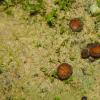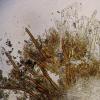
15-12-2025 15:48
 Danny Newman
Danny Newman
Melanospora cf. lagenaria on old, rotting, fallen

15-12-2025 15:54
 Johan Boonefaes
Johan Boonefaes
Unknown anamorph found on the ground in coastal sa

15-12-2025 21:11
 Hardware Tony
Hardware Tony
Small clavate hairs, negative croziers and IKI bb

15-12-2025 07:09
 Danny Newman
Danny Newman
indet. Rutstroemiaceae sp. on unk. fallen leavesMc

15-12-2025 07:05
 Danny Newman
Danny Newman
Pseudosclerococcum golindoi (det: Zotto)near Cosb

15-12-2025 11:49
 Danny Newman
Danny Newman
ITS sequences from the following two collections B

15-12-2025 12:34
 Danny Newman
Danny Newman
indet. Rhytismataceae on oak leafnear Purchase Roa

09-12-2025 12:06
 Andgelo Mombert
Andgelo Mombert
Bonjour,Je recherche l'article concernant Hypobryo
Sphaerosporella ?
Carmel Sammut,
09-04-2015 21:39
Microscopically the spores are globose 11-12µm in diameter (measured in asci as I could not find any free ones), asci are biseptate at base, IKI-ve, 180-210 x 16-20µm, paraphyses were septate, occasionally split at base and slightly inflated at the tips (about 7µm). There appear to be two types of hairs - dark brown, thick walled, septate and acute at the tip 180-330 x 21-27µm (which look like Scutellinia type hairs) and pale thin walled hairs.
I tried keying out these specimens but the only genus I could come close to is Sphaerosporella but they look different from S. brunnea and S. hinnulea and I am suspecting I got the genus wrong.
Any ideas?
Mario Filippa,
09-04-2015 22:56
Re : Sphaerosporella ?
I think that it is a Scutellinia... Why not? The hairs in Scutellinia are longer near the margin but they are present also towards the base. The pigments in the paraphyses are orange-reddish in water?
Mario
Carmel Sammut,
10-04-2015 15:52
Björn Wergen,
13-04-2015 00:44

Re : Sphaerosporella ?
Hi there,
spores appear smooth because they are immature. Take another apothecia to check if there are mature spores, which will surely have a spiky / warty ornamentation (S. heterosphaera, S. legaliae, S. trechispora,...)
regards,
björn
spores appear smooth because they are immature. Take another apothecia to check if there are mature spores, which will surely have a spiky / warty ornamentation (S. heterosphaera, S. legaliae, S. trechispora,...)
regards,
björn
Carmel Sammut,
13-04-2015 17:49
Re : Sphaerosporella ?
Thanks Björn for your suggestion. I will wait a few days and take a section from the larger specimen and see if it is mature enough.





